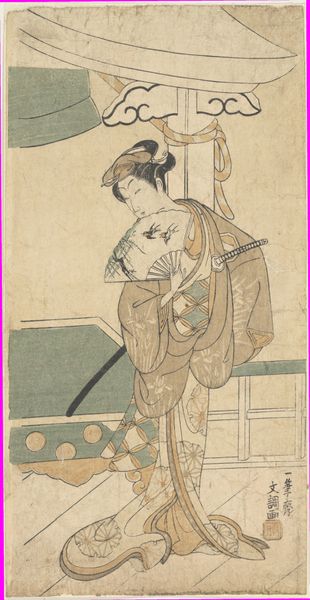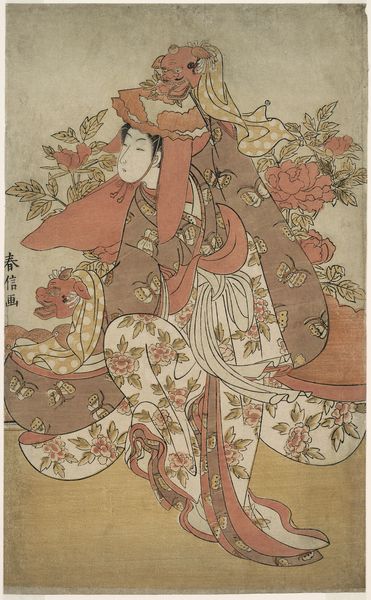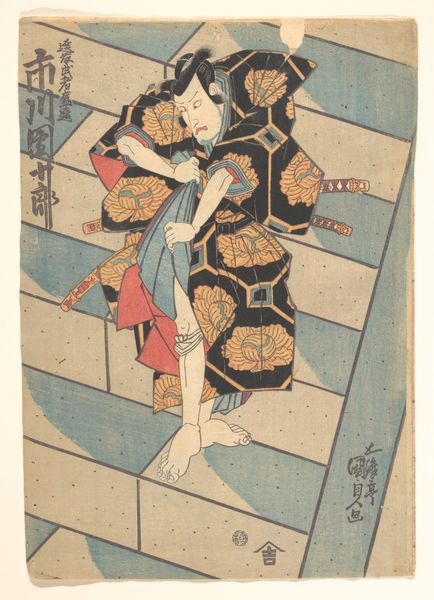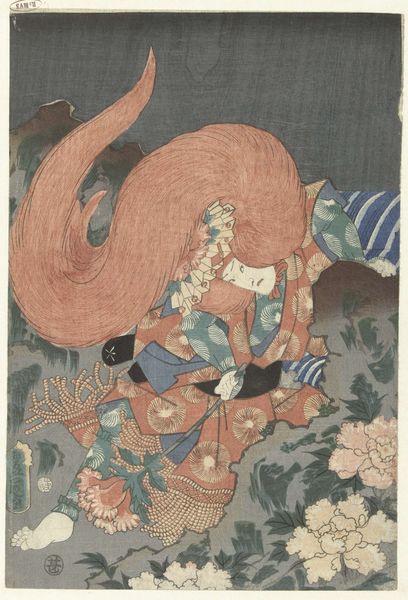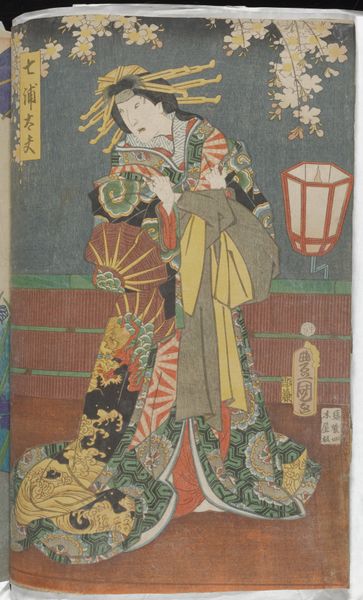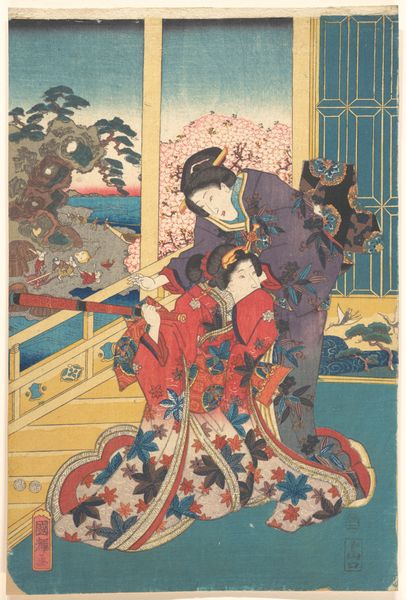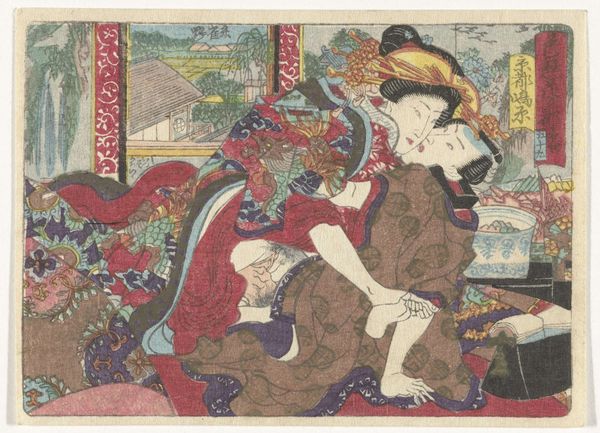
Paragons of Filial Piety (from a set of twenty-four) 1834 - 1866
0:00
0:00
print, woodblock-print
#
narrative-art
# print
#
asian-art
#
ukiyo-e
#
japan
#
figuration
#
woodblock-print
Dimensions: H. 5 7/8 in. (14.9 cm); W. 4 1/8 in. (10.5 cm)
Copyright: Public Domain
Curator: Here we have one print from a series by Utagawa Kuniyoshi created between 1834 and 1866, "Paragons of Filial Piety," currently housed at the Metropolitan Museum of Art. The print uses the woodblock technique and focuses on narrative art, reflecting the theme of filial piety prevalent in ukiyo-e. Editor: My immediate impression is that the composition is particularly interesting in its rendering of space. There is a flattened quality, but also the verticality suggested by the cloth creates a strong linear element in tension with the patterned horizontality behind it. Curator: Absolutely. We see an intersection of artistic representation and cultural values, where this artistic representation portrays a significant Confucian virtue through this intimate scene, showing a man, likely a father, caring for what seems to be his bedridden daughter-in-law by washing. What do you make of that as a scene of narrative figuration? Editor: From a formal standpoint, the lines in the water motif directly beneath the platform on which these figures are placed mirror the fabric of the ornate platform itself, drawing attention to an almost perspectival compression. Also the tonal unity throughout gives it all a feeling of quiet devotion, don't you think? Curator: Indeed. And given Kuniyoshi's penchant for portraying historical and legendary figures, it is useful to acknowledge that this piece resonates with deeper questions around obligation and familial dynamics in 19th-century Japanese society. His choices would, for example, also reflect social tensions in a society experiencing various degrees of urbanization and westernization at the time. Editor: You know, there is an intriguing interplay here as the detailed rendering of pattern versus the flattening effect it causes across the image—a compelling combination. Also notice the way that red is used to emphasize the figure nearest the viewer versus the background elements; quite artful and intentional choices seem evident here. Curator: I agree, the dynamic is fascinating. Seeing these cultural values presented in such detailed colorings truly demonstrates not just the values of the era but also a commitment by Kuniyoshi to explore his social and political present. Editor: The emotionality and subtle gradations make me wonder how Kuniyoshi leveraged formal qualities like texture, depth, and even flatness to emphasize the themes embedded in Japanese culture that we discussed earlier. Curator: This approach makes room for discussion, which is precisely why viewing the image within both artistic and sociological constructs becomes vital to its study. Editor: The more we look at this, the more interesting the work becomes. The beauty really deepens the message.
Comments
No comments
Be the first to comment and join the conversation on the ultimate creative platform.
